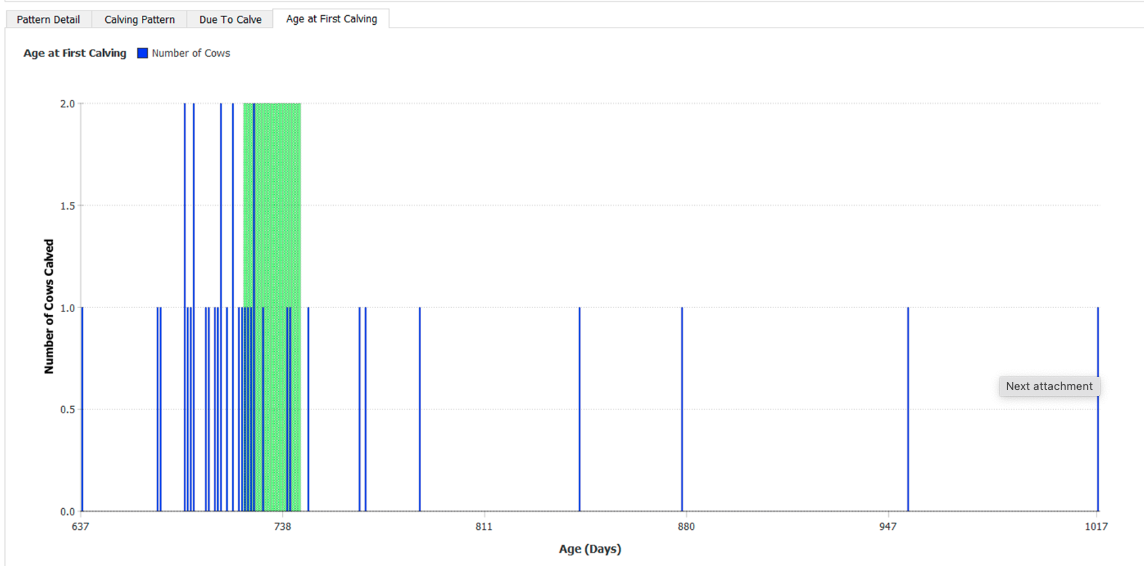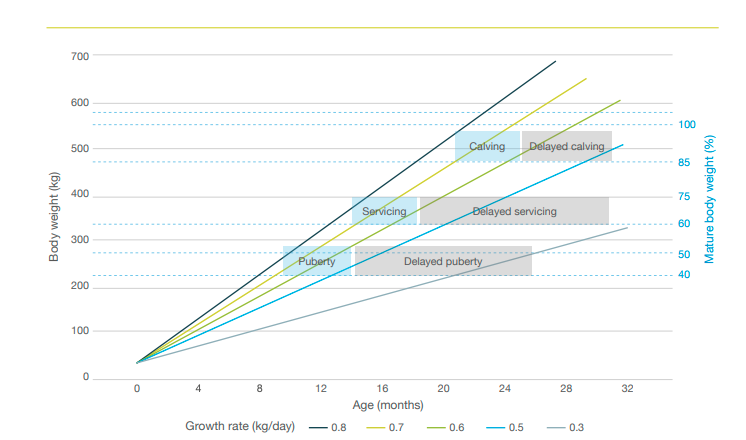
Posted By:
What is AFC? This is average age at first calving, this is the age at which your heifers calve for the first time. This is averaged across all heifer calvings and given in days or months. For example, 24 months =730 days. Average can often misleading as it doesn’t account for outliers. In an AYR and less commonly block systems, we could have extremes of age which result in a misleading AFC. Our data analysis software Total vet allows us to see analyse this spread. Understanding the spread of ages can help us understand poor vs good performance between reared heifer batches.
Consistency is key.

Using age alone to determine when we carry out a management task can be risky, we shouldn’t focus on this only as it can sometimes compromise performance. We can all recall a group of heifers which haven’t performed as well as we hoped. Maybe these missed their targets and you had to delay bulling, or you had to bull them and had poorer conception?
We should be using liveweights (or height for weight as a minimum) and our herd specific targets throughout the rearing stages- weaning, puberty, service and calving to determine when to carry out management tasks and evaluating rearing success.

Time taken to monitor growth is worthwhile. If we are missing daily live weight gain targets we should investigate why?
This year gut worms at pasture have been a significant issue in some groups and this has significantly impacted growth. Management changes such as more regular weighing, managing pasture risk and frequent worm egg counting will help to avoid this for next summer.
Recording disease real-time alongside DLWG allows us to see the significance of these event and therefore prioritise management measures.
Regular weighing will also allow us to see if our nutrition is adequate at each stage of rearing period.
If we meet targets heifers should: Cycle, conceive, calve without delay, and milk well as first calvers, then succeed in getting back in calf early in the next mating period. Well-grown heifers also produce more milk in their first and subsequent lactations, compete better with mature cows and can survive longer in the
- Rosie Lyle milking herd than poorly grown animals.
Targets for Heifers – Contact the office team for a copy and fill this in together with your herd vet at the next routine.
Whilst on my visits I have been having several discussions...
As our feline friends get older there are a few conditions...
Another winter discussion group season is now behind...
©2024 Shepton Veterinary Group Ltd., All rights reserved.
Privacy Policy • Terms & Conditions • Cookie Policy